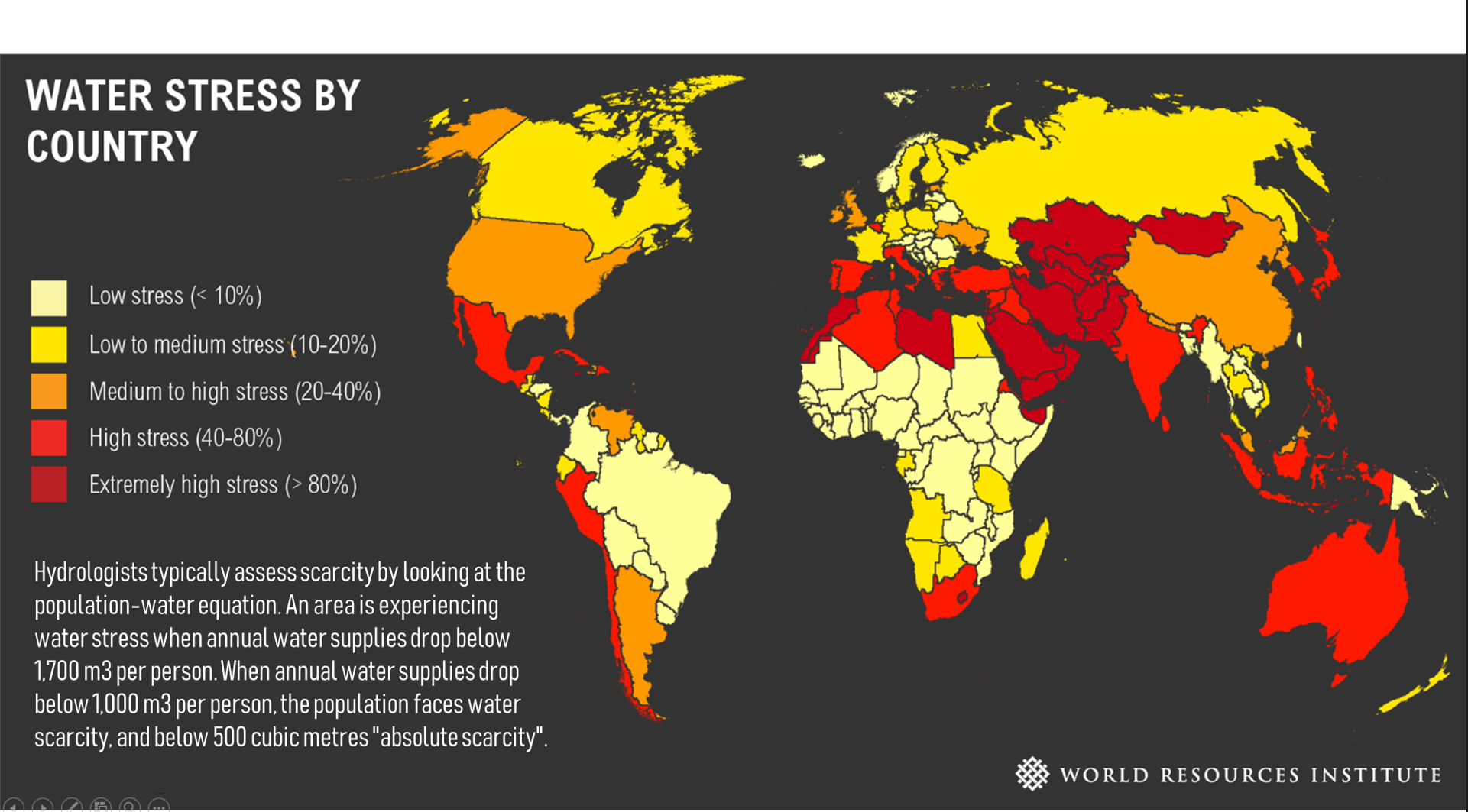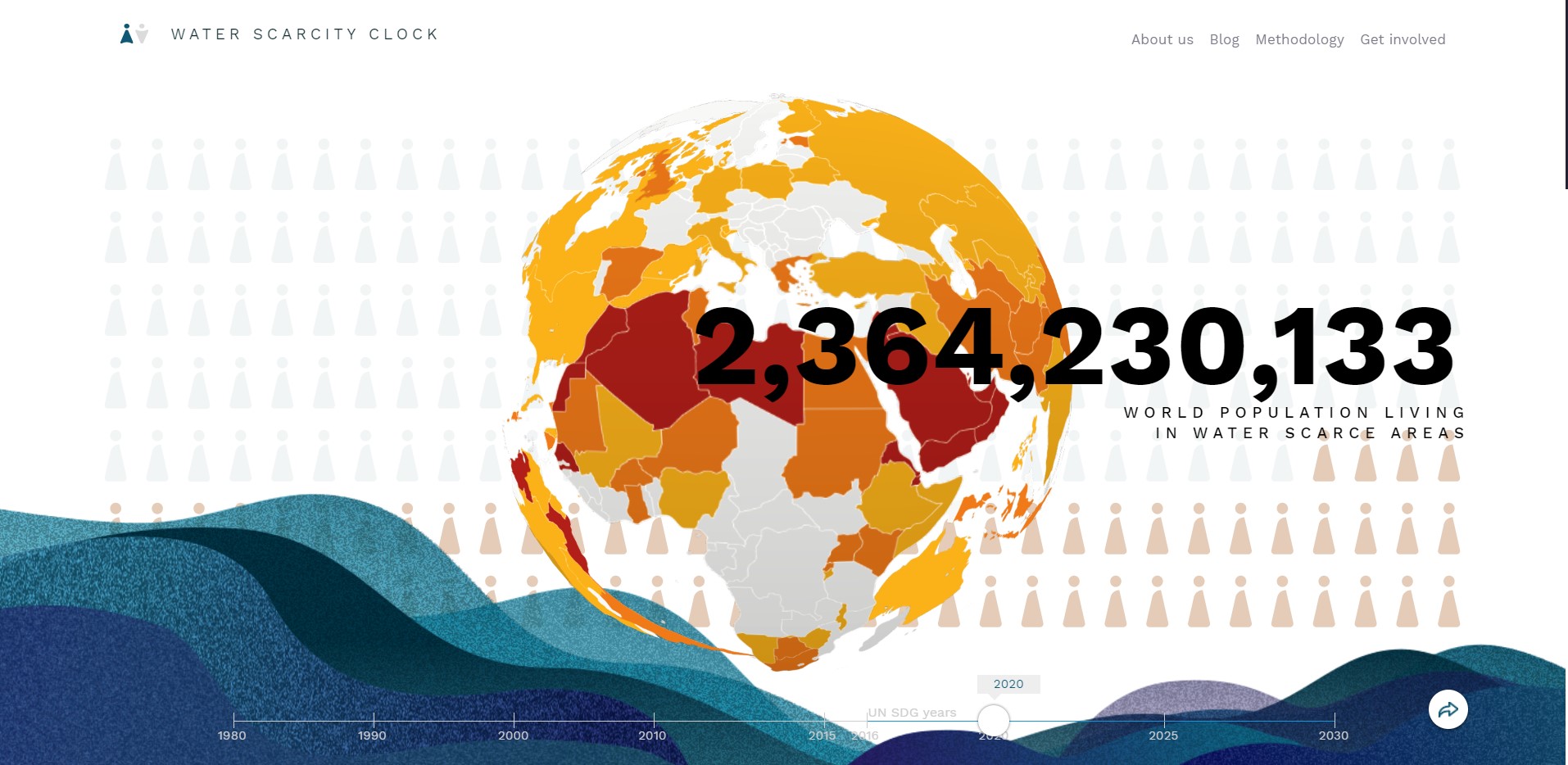
Water scarcity can mean scarcity in availability due to physical shortage, or scarcity in access due to the failure of institutions to ensure a regular supply or due to a lack of adequate infrastructure.
Water scarcity already affects every continent. Water use has been growing globally at more than twice the rate of population increase in the last century, and an increasing number of regions are reaching the limit at which water services can be sustainably delivered, especially in arid regions.
There is not a global water shortage as such, but individual countries and regions need to urgently tackle the critical problems presented by water stress.
Hydrologists typically assess scarcity by looking at the population-water equation. An area is experiencing water stress when annual water supplies drop below 1,700 m3 per person. When annual water supplies drop below 1,000 m3 per person, the population faces water scarcity, and below 500 cubic metres "absolute scarcity".
Hydrologists typically assess scarcity by looking at the population-water equation. An area is experiencing water stress when annual water supplies drop below 1,700 m3 per person. When annual water supplies drop below 1,000 m3 per person, the population faces water scarcity, and below 500 cubic metres "absolute scarcity".
Water has to be treated as a scarce resource, with a far stronger focus on managing demand. Integrated water resources management provides a broad framework for governments to align water use patterns with the needs and demands of different users, including the environment.
Water scarcity and stress facts and figures
Over 2 billion people live in countries experiencing high water stress. (UN, 2018)

(Please click the following link to watch World Water Scarcity Clock. https://worldwater.io/)
It is estimated that by 2040, one in four of the world’s children under 18 – some 600 million in all – will be living in areas of extremely high water stress. (UNICEF, 2017)
700 million people worldwide could be displaced by intense water scarcity by 2030. (Global Water Institute, 2013)
About 4 billion people, representing nearly two-thirds of the world population,
experience severe water scarcity during at least one month of the year (Mekonnen and Hoekstra, 2016)
With the existing climate change scenario, by 2030, water scarcity in some arid and semi-arid places will displace between 24 million and 700 million people. (UNESCO, 2009).
A third of the world’s biggest groundwater systems are already in distress (Richey et al., 2015).
Nearly half the global population is already living in potential water-scarce areas at least one month per year and this could increase to some 4.8–5.7 billion in 2050. About 73% of the affected people live in Asia (69% by 2050) (Burek et al., 2016).
Sources:
https://www.unwater.org/water-facts/scarcity/
https://www.un.org/waterforlifedecade/scarcity.shtml
